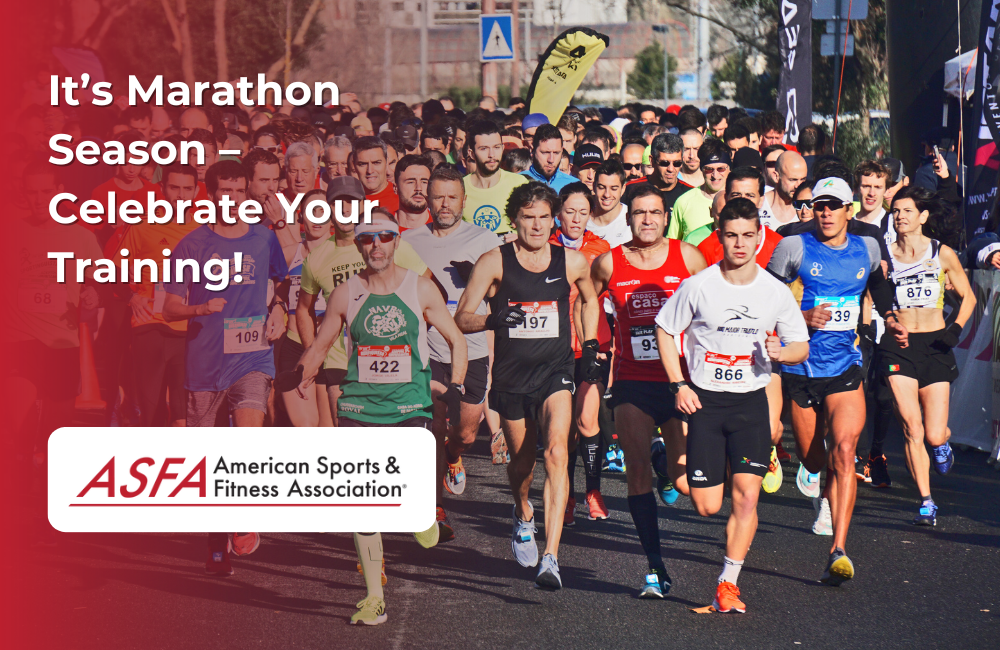The air is crisp, the leaves are turning, and marathon season is upon us! After months of dedication, long training runs, and careful planning with your health and fitness software or wellness and nutrition programs, each training cycle has prepared you for this moment. Marathon day isn’t just about running 26.2 miles; it’s a celebration of your perseverance, discipline, and the countless hours you’ve invested in your training. This day is yours to enjoy, so put any negative thoughts or worries behind you. Today, believe in yourself—you’ve trained for this, and you’re capable of achieving something incredible! To help you make the most of your special day, here are some detailed tips to ensure you have a smooth, successful marathon experience.
Choosing the Right Marathon
Choosing the right marathon is a crucial step in your marathon training journey. With numerous marathons taking place across the USA, it’s essential to select one that suits your needs and goals. Consider factors such as location, course terrain, weather conditions, and crowd support. For example, if you’re a beginner, you may want to opt for a flat and fast course like the Kansas City Marathon or the Grand Rapids Marathon. On the other hand, experienced runners may prefer a more challenging course like the Boston Marathon or the South Lake Tahoe Marathon.
Building a Strong Foundation
Building a strong foundation is critical for a successful marathon training. This involves creating a base fitness level through consistent training and incorporating strength training to improve performance and reduce the risk of injury. A well-structured training plan should include a mix of running, cross-training, and rest days to allow for recovery and adaptation. For example, a beginner’s training plan may include three to four runs per week, with one longer run on the weekends, and two to three cross-training sessions per week.
Creating a Balanced Training Plan
Creating a balanced training plan is essential for marathon training. A well-balanced plan should include a mix of running, cross-training, and rest days to allow for recovery and adaptation. It’s also important to incorporate strength training to improve performance and reduce the risk of injury. For example, a balanced training plan may include:
-
Three to four runs per week, with one longer run on the weekends
-
Two to three cross-training sessions per week, such as cycling or swimming
-
Two to three strength training sessions per week, focusing on exercises that target the core, glutes, and legs
-
One to two rest days per week, to allow for recovery and adaptation
Start the Day with a Nutritious Breakfast
A marathon is an endurance test like no other, and your body needs the proper fuel to sustain you for the entire race. A nutritious, well-balanced breakfast is essential, but it's important to remember that now is not the time to try anything new. Certified nutrition educators emphasize sticking to the foods that you've used during training to avoid any gastrointestinal (GI) distress on race day. This is especially critical because new foods can trigger unpredictable digestive issues that may disrupt your performance and ruin the experience.
For breakfast, aim for a mix of simple and complex carbohydrates and lean protein. Carbs provide the quick energy you'll need to power through the early miles, while protein helps with muscle repair and long-lasting energy. Many runners swear by a combination like a half bagel with peanut butter, toast with mashed avocado, or oatmeal with banana and honey.
Keep in mind that for large marathons, you may have to check in and line up in your starting corral well in advance of the race—sometimes a full hour or two before the gun goes off. This means your breakfast needs to be substantial enough to carry you through until the race starts without leaving you hungry. If you're unsure how many calories you need, nutrition tracking apps can be incredibly helpful in ensuring you're consuming enough fuel without overloading your digestive system. Remember: this meal sets the tone for the rest of the day, so choose wisely!
Refuel Throughout the Race
Running a marathon burns an enormous amount of energy. The average runner will burn between 300 to 600 calories per hour, which translates to approximately 100 calories per mile. The 'long run' is a crucial component of marathon training, preparing the body for the energy demands of the race by gradually increasing mileage and building endurance. It’s impossible to fully replenish what you’re burning during the race, but eating small amounts at regular intervals is key to maintaining your energy levels and preventing “hitting the wall”—that dreaded point where your body runs out of fuel and your pace grinds to a halt.
One common mistake runners make is forgetting to eat during the marathon. When you’re in the flow of the race, it’s easy to lose track of time. Many runners set a timer on their sports watch or phone to remind them to eat every hour. A small intake of 100 to 200 calories per hour is usually sufficient to sustain energy levels without overwhelming your stomach.
You should always stick to the foods you trained with to avoid any unpleasant surprises. Energy gels, chews, bananas, and bars are popular choices because they’re easy to digest and provide quick fuel without sitting heavy in your stomach. While it’s important to keep refueling, it’s equally important not to overdo it. Eating too much at once can cause GI distress, nausea, or cramps. The goal is to maintain a steady flow of energy to keep your body moving at its best.
Warm Up and Stretch Properly
Cold muscles are more prone to injury, and marathon day often starts early when temperatures are cooler. Warming up and stretching before the race is crucial to get your blood flowing and loosen up your muscles. These activities are integral parts of the training cycle, helping to prepare your body for the demands of marathon running. Start with a light jog or brisk walk to raise your heart rate, followed by dynamic stretching—movements like leg swings, walking lunges, or high knees can help prepare your muscles for the miles ahead.
Your functional fitness specialist likely introduced you to a variety of stretches during your training. Use this knowledge to focus on key muscle groups—especially your calves, hamstrings, quads, and hip flexors—that will be working hard during the race. If you feel any tightness or discomfort during the marathon, don’t hesitate to step to the side and stretch. Many runners fear losing time by stopping, but it’s far better to spend a minute stretching than to push through pain and risk a muscle tear or strain that could take you out of the race entirely.
Remember, muscles can tighten up during long runs, especially in the cold. Stretching during the race is a smart way to avoid injury and keep your muscles in good condition. If you experience cramps or aches, stop at an aid station or step aside to take care of your body. Better to lose a minute stretching than to lose weeks recovering from an injury.
Stay Hydrated Throughout the Race
Dehydration is a common concern for runners, but it's not just a risk in hot weather—cold weather can be deceptive, making it harder to recognize how much fluid you're losing through sweat. It's vital to hydrate consistently throughout the race, even if you don't feel particularly thirsty. Aim to drink 12-16 ounces of fluids per hour, alternating between water and sports drinks to replenish lost electrolytes.
Sodium and magnesium, essential minerals that help regulate muscle function and hydration levels, are lost through sweat. Without adequate electrolytes, you may experience muscle cramps or fatigue. Cramping can be a serious issue, especially in the later miles of a marathon, so staying on top of your hydration is crucial. Using hydration apps or a hydration plan built into your fitness software can help remind you to drink regularly and stay hydrated.
Be aware of the signs of dehydration, such as dry mouth, dizziness, and fatigue, and take action immediately if you notice any of these symptoms. Hydration is just as important as fueling, and striking the right balance between water and electrolytes will keep you energized and focused as you power through the race.
Active Recovery and Injury Prevention
Active recovery and injury prevention are critical components of marathon training. Active recovery involves incorporating low-intensity activities, such as yoga or walking, to help your body recover from intense training. Injury prevention involves taking steps to reduce the risk of injury, such as incorporating strength training and flexibility exercises into your training plan. For example, you can incorporate exercises that target the core, glutes, and legs to improve running efficiency and reduce the risk of injury.
Ease Up on Workouts Leading Up to the Marathon
In the final week leading up to your marathon, it’s important to taper your workouts as a crucial phase in the training cycle to ensure your body is well-rested for the race. The goal is to keep your muscles active without pushing them too hard, allowing them to rest and recover in time for the big race. Cross-training is a great way to stay in shape without risking injury from overuse. Low-impact exercises like indoor rowing, swimming, or using an elliptical machine are excellent choices because they provide cardiovascular benefits while being gentle on your joints.
Your online personal trainer software can help you plan a tapering schedule that balances light activity with sufficient rest. This week is about maintaining your fitness level without overexerting yourself, so listen to your body and avoid intense workouts that could lead to muscle fatigue or injury. By giving your body the rest it needs, you’ll arrive on marathon day feeling fresh, strong, and ready to perform at your peak.
Celebrate the Journey
Marathon day is more than just crossing the finish line—it's the culmination of months of hard work, sacrifice, and determination. Take a moment to reflect on the progress you've made since you started training. Whether this is your first marathon or one of many, the day itself is a victory. Enjoy the atmosphere—the cheers from the crowd, the camaraderie among runners, and the incredible sense of accomplishment that comes from pushing your body to its limits.
Every mile is a testament to your dedication, and crossing the finish line is a monumental achievement that few get to experience. As you approach the final stretch, soak it all in. This is your moment—celebrate your success, savor the feeling of accomplishment, and be proud of everything you've achieved along the way.
By following these tips, you'll be fully prepared to have a successful, enjoyable marathon day. Whether you're relying on your health and fitness software, a nutrition app, or personalized training plans, remember that you've put in the hard work. Now it's time to enjoy the journey and cherish the finish line—you've earned it!
Execution and Reflection
Execution and reflection are critical components of marathon training. Execution involves putting your training plan into action and staying focused on your goals. Reflection involves evaluating your progress and making adjustments to your training plan as needed. For example, you can reflect on your weekly mileage and adjust your training plan to ensure you’re meeting your goals. You can also reflect on your nutrition and hydration plan to ensure you’re fueling your body for optimal performance.





